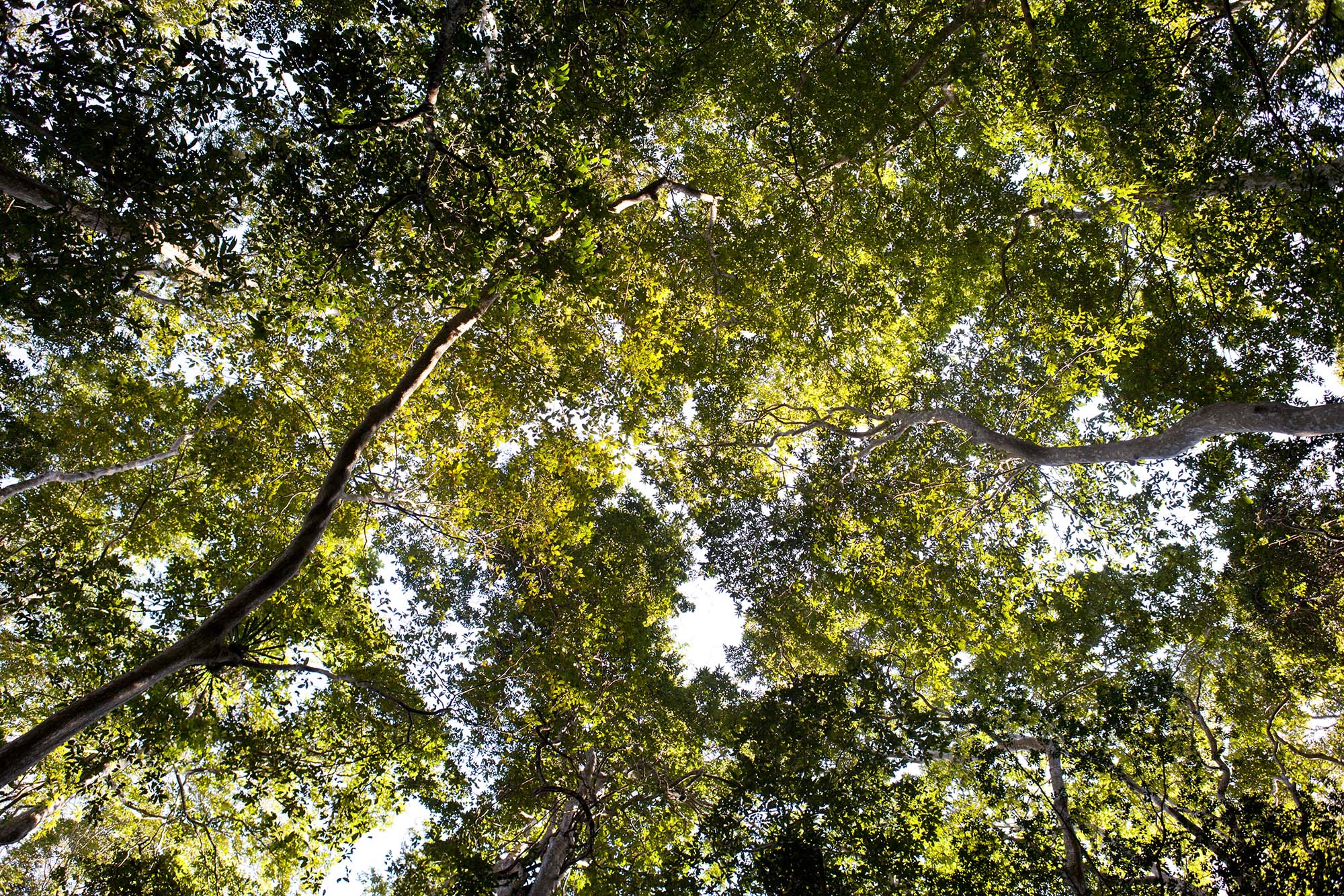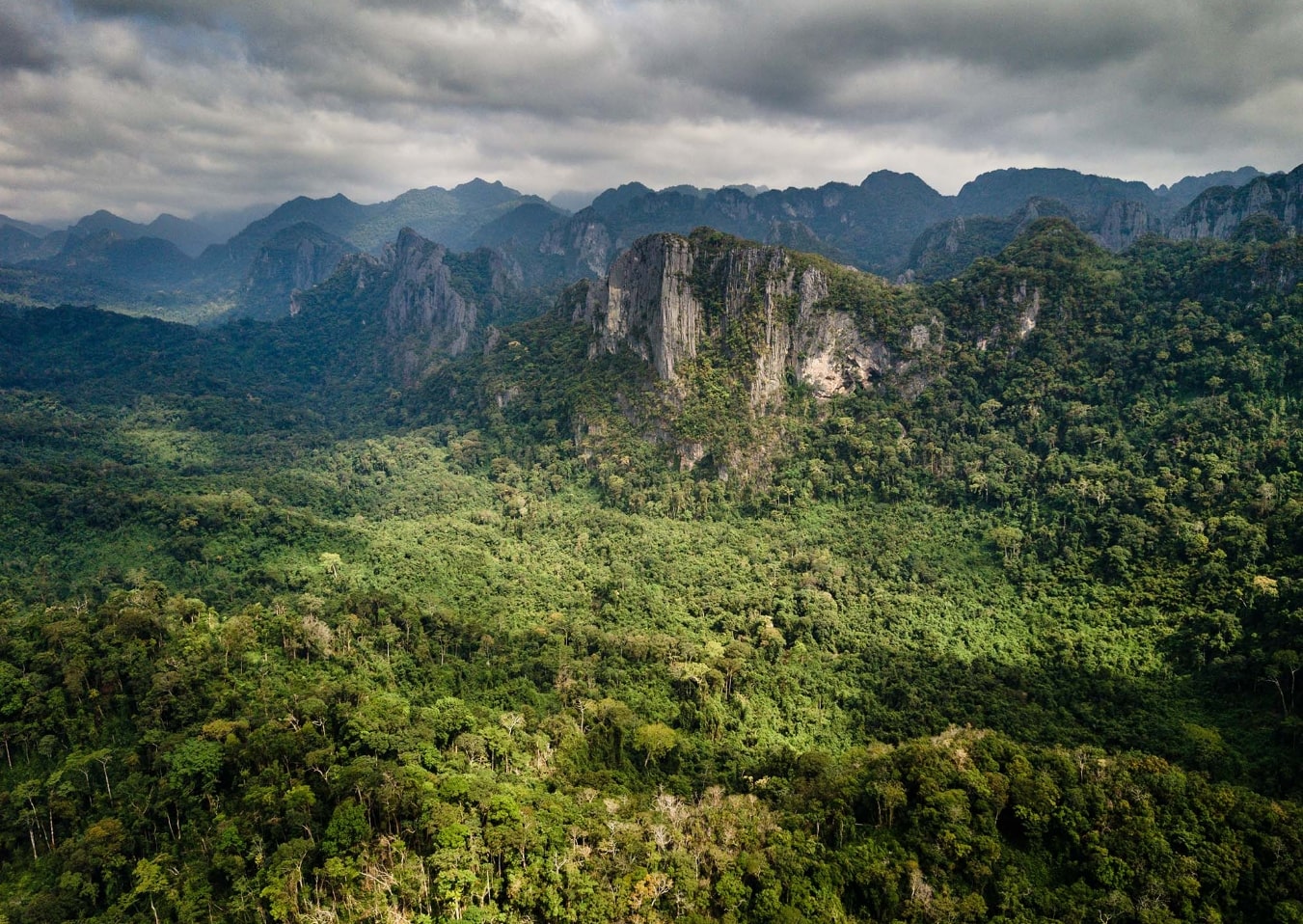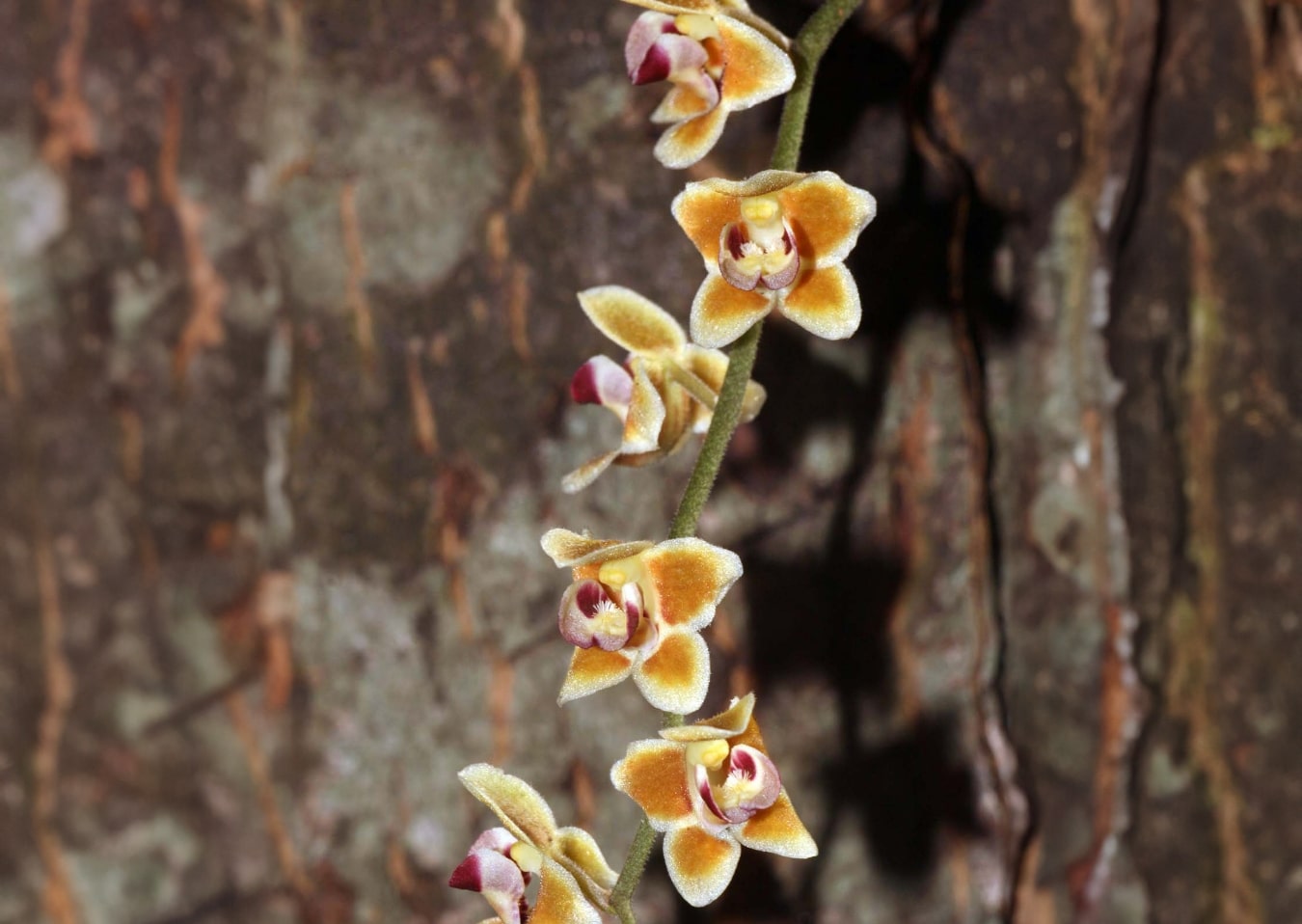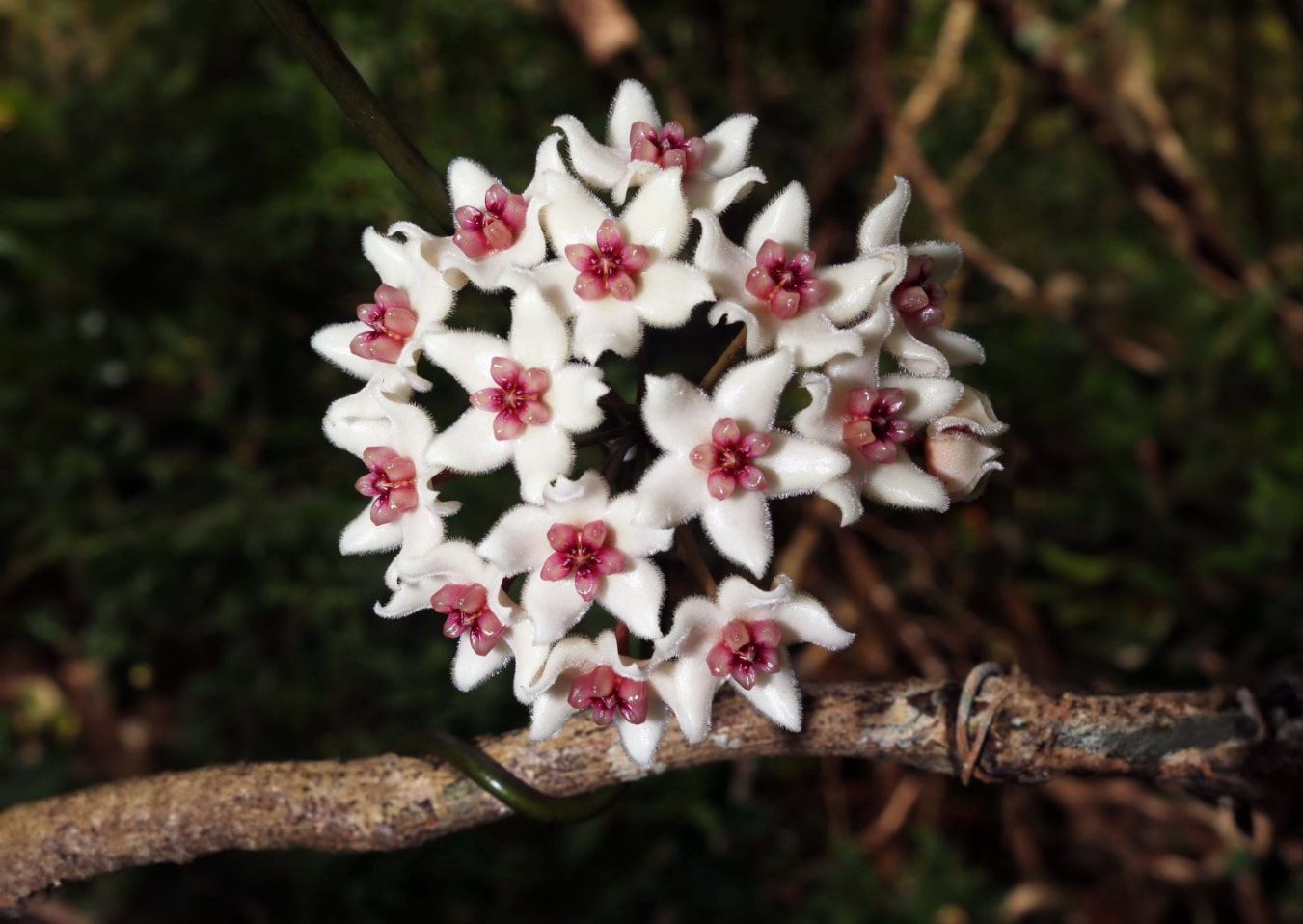PLANTS OF HIN NAM NO
The Hin Nam No National Park and Phong Nha-Ke Bang National Park in Vietnam together form a vast conserved landscape in the Annamite Mountains with a wide range of ecosystems and habitats, including dry karst mountain tops, semi-deciduous and evergreen forests, high-altitude forests, and rare coniferous forests. It is also home to a high degree of floral endemism, including over 2,700 vascular plant species, many of which are rare, endangered, and/or endemic to Central Lao PDR and/or Vietnam. The parks provide the best hope for the long-term population viability of many of these plant species, and surveys regularly reveal previously unknown species, which highlights the area’s significance and singularity.
The rural population in Laos, which accounts for around 67% of the total population, is highly dependent on forests for their livelihoods, relying on over 700 plant species for sustenance, fuel, fiber, medication, and shelter.
The vast forest coverage of approximately 94% in Hin Nam No National Park makes it a crucial habitat for several useful, unique and endemic species.
Protecting ecoregions such as Hin Nam No National Park, which houses some of the world's most endangered terrestrial and aquatic ecosystems and species, is necessary for their conservation.
The park has three main forest types:
The evergreen forests on limestone slopes and valleys are a sight to behold, with towering trees that can grow up to 40 meters in height and 2.5 meters in diameter. These forests are home to numerous native species that can only be found within this area like the locally common mahogany Munronia lancifolia.
The high-altitude forests on sandstone slopes in the Phou Chueang mountain massif in the North of the park are equally remarkable. They host a highly specialized and diverse vegetation ranging from pristine dense evergreen to a rare moist dwarf forest. These plants are found at different heights on the mountain, with some growing at over 1,200 meters above sea level, including a series of strict endemics. These well-preserved forests are a testament to the adaptability of nature.
Finally, Karst forest ecosystems are found on the tops of limestone hills and mountains and are extremely dry habitats with diverse plants adapted to the extreme conditions, with unique species that have evolved to thrive in the challenging environment. These forests are home of succulent and dry-tolerant species, and the leaf litter accumulation in small depressions, caverns, and karstic pockets provide specific substrate conditions necessary for the growth of most woody and herbaceous species characteristic of this habitat.
The Hin Nam No National Park is a botanical treasure trove, home to a remarkable diversity of plant life. To date, more than 1,520 vascular plant species have been recorded in the park, representing 175 families and 755 genera. However, as only a few areas have been surveyed, it is believed that the actual number of vascular plant species is about twice as high, highlighting the vast and yet unexplored diversity of this park.
The park's plant life is of particular importance due to the exceptional level of endemism found within its boundaries. Several regions in the park are home to strict localized endemic species, which cannot be found anywhere else on the planet. These strict endemics are plants that have evolved in isolation within a specific area, leading to unique adaptations and characteristics. Many of the plant species in Hin Nam No National Park are relicts, meaning they have survived from an earlier time. The origin of the flora in the park is closely connected with ancient isolation on tops of limestone formations, which represent true ecological islands in the vast flatland areas of Eastern Indochina. These relict plants have persisted for centuries and offer a glimpse into the past, providing valuable insight into the evolution of plant life in this region.
The park's rich orchid family is well-represented, with some species being unique to the park like the Chilosticha pulchella. These orchids add to the park's visual and aromatic beauty and also hold scientific importance for their unique characteristics and role in the park's ecosystem.
Along with the orchids, the park is home to extensive bamboo forests that are widely used by locals for construction, weaving, and food. The bamboo forests also provide crucial habitats for several animal species, including the bamboo rat and bamboo lemur. Due to the dense vegetation and thick canopy, they play an integral role in the park's ecosystem.
The park also boasts high assortment of fern species, which are ancient plants known for their intricate fronds. Many of the fern species in the park are epiphytic (they grow naturally in a totally soilless condition) and have adapted to the park's constantly changing and humid environment by developing distinct water-storage structures.
Many new species have been discovered in recent years, including the Hin Nam No Caper, the Hin Nam No Begonia, the Khammouane Begonia, Tatiana's Begonia, Hoya aphylla, and the Apidistra medusa.
The park's plant life is not only visually stunning, but also plays a crucial role in providing primary healthcare in remote areas. A recent survey conducted among villages of different ethnic groups found that 280 plant species are recognized and utilized as traditional remedies for treating a diverse range of diseases. However, only 18% of these plants are cultivated by the villagers, with the majority being sourced from the wild surroundings or forests near the villages.
Although the majority of the recorded species in Hin Nam No National Park remain not evaluated (NE) according to the IUCN Red List terminology, 34 of them are globally threatened with seven species assessed as near threatened (NT), 16 as vulnerable (VU), eight as endangered (EN), and three as critically endangered (CR). The three critically endangered species are Hopea chinensis (ten-thousand-year wood), Diospyros mun (Ebony wood), and Aquilaria crassna (Agarwood), the fragrant dark resinous wood, which is used for incense and perfumes.
This highlights the importance of conservation efforts in the park, to preserve the unique and diverse plant life that thrives in this remote and remarkable corner of the world.








